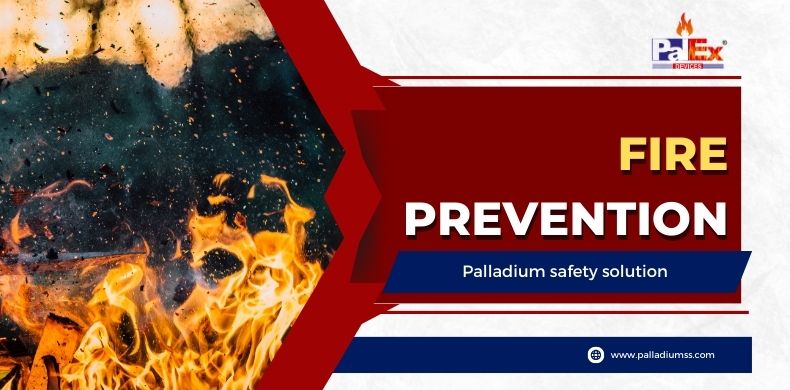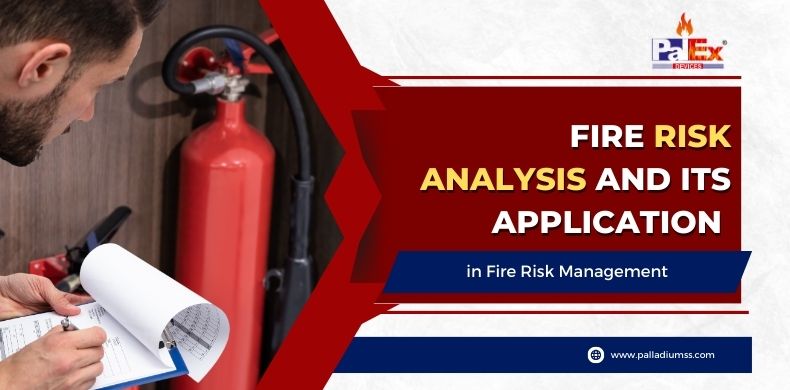Fire Prevention

ABOUT | CONTACT | CAREER | BLOG | For sales & dealership enquiries  +91-99718-90006
+91-99718-90006



The first and foremost point while acknowledging any building for fire safety is to know about the shape, size, location, construction, and carried out the process in the building. After collecting all the details, fire risk management prescribed a fire safety model to improve the building safety grading to reduce fire risks and damages. It is essential to get an analysis of any building. Fire can take place at ay place at any time. Prevention is better than cure. So we have to be cautious about the fire. Fire risk analysis helps you to adopt precautionary steps to avoid the risk of fire as well as the steps to adopt when a fire breaks out.
Proper fire protection strategies are crucial to minimizing the risk of fire. However, it’s also important to ensure that the correct fire safety and evacuation plans have been put in place to tackle the worst situation of fire.
A fire has the ability to destroy the lives and property in just minutes. It took birth from small ignorance and may change to wild disaster. So it is quite important to have the awareness that includes what to do, how to do if a fire breaks out. There are some precautions that you can adopt o save the lives of yourself and your belongings.
Continue reading “Fire Safety Awareness”
Fire Safety is the leading concern for any business owner. You have a lot of responsibility. Not only do you have to worry about your company’s daily operations, but you also have to ensure that your employees and customers are safe. One of the best ways to do this is to create and maintain a fire safety plan.
Many elements go into a fire safety plan, but we’ve compiled a comprehensive checklist to help you get started and explained them in detail:
Your business insurance policy is vital in the event of a fire. It will help you cover the costs of rebuilding and replacing any damaged or destroyed property. Make sure you review your policy regularly to ensure that it is up to date and covers everything you need.
A fire can start anywhere, so it’s important to regularly inspect your building, both inside and out. Look for any potential fire hazards, such as flammable liquids or electrical wiring, and make sure they are stored or used safely. Also, check to see that all exits are clear and easy to access. Also Read : 8 Fire safety Tips for Office
Electrical equipment is one of the leading causes of fires in businesses. Regularly inspect all electrical equipment, such as computers, printers, and Copiers, to make sure they are in good working order. If you see any signs of damage, such as frayed wires or singed plugs, replaced the equipment immediately.
If you have a fireplace or use any type of fuel-burning stove, it’s important to have the chimney and vents cleaned regularly. A build-up of soot and debris can be a fire hazard.
Flammable liquids like gasoline, kerosene and paint thinner must be stored in appropriate containers and away from heat sources. Keep them in a well-ventilated area, and ensure employees know where and how to use them safely.
A key element of fire safety is keeping your workplace clean and free of clutter. This will help to prevent fires from starting in the first place and will also make it easier for people to evacuate if a fire does break out.
It’s not enough to just have a fire safety plan in place – you also need to make sure that your employees are familiar with it. Hold regular fire drills and educate them about the importance of fire safety.
Clear signage is vital in a fire situation. It should be easy for employees and customers to see and understand. Make sure to post signs throughout your building indicating the location of fire exits, fire extinguishers, and first-aid kits.
In the event of a fire, it’s important that everyone in your business knows what to do. That’s why you should perform a fire drill at least once a year. Run through the evacuation procedures with your employees and make sure everyone knows where the exits are.
In the event of a fire, you may need to provide first aid to your employees or customers. Ensure you have a well-stocked first aid kit and that all your employees know where it is.
While fires in businesses are not very common, they do happen. And when they do, it’s important to be prepared. Having a fire safety equipments in place will help to ensure that everyone in your business knows what to do in the event of a fire. Here are a few tips to help you get started.
Prevention is always better even if in terms of Fire safety. You never know when things turn worse. So it is still advisable to equip yourself well in advance so that one can easily sail through the adversity. Here are five essential fire safety equipment for your home that everyone should be aware of.
It is important to have one on every floor of your house. But the most important thing is a thorough knowledge of how to use it. Most of the time, people do have fire extinguishers, but the only thing they lack is its proper usage. So, if your house catches fire at an early stage, only then use Palladium fire extinguishers.
From using a furnace to lightning a candle, Carbon Monoxide is already kept on producing in every house. However, the amount is negligible. But due to the already production of carbon monoxide in every house, it is advisable to install carbon monoxide alarms because they can help you to know when the level exceeds. Whenever the level of carbon monoxide increases, one feels nauseous, and that’s an indication of higher carbon monoxide levels.
Whenever a house catches fire, the most difficult situation is safely evacuation of all the family members even when the main path is blocked. So having a fire escape ladders can help in the safe evacuation of members from a big building apartment. Moreover, these can be folded and thus are easy to store.
These help you to give the first signal that something is not right. Whenever the level of smoke increases, these smoke detectors indicate a red flag. So it is advisable to install them at every level of your house. Most importantly, one is recommended to check it’s working every month and change the batteries every 4-5 months.
This is one of the most important equipment, but unfortunately, it is considered the least important. Whenever fire happens due to kitchen oils, then having fire blankets can help one to evacuate the building with utmost care. So it is recommended to have as many fire blankets as possible in the house with respect to the number of your family members.
Life is uncertain, but you can certainly ensure your and your family’s safety well in advance!
All large and small-scale businesses should be aware of fire hazards. Failing to take the needed precautions will make your business vulnerable to destruction. Faulty wiring and electrical equipment can result in a fire accident. However, if you have a proper fire safety system installed, you can protect your business from expensive and dangerous fires.
Having a fire safety system installed will also help you and your employees to work at ease. They will also have a way to save their lives if any such incidents occur. The business owner should make his staff and management aware of the safety plan. The training must be provided and practiced well in advance so that there is no trouble escaping at the time of emergency. Be prepared well in advance.
A fire and life safety program has a detailed guide to prevent a fire and emergency medical assistance.